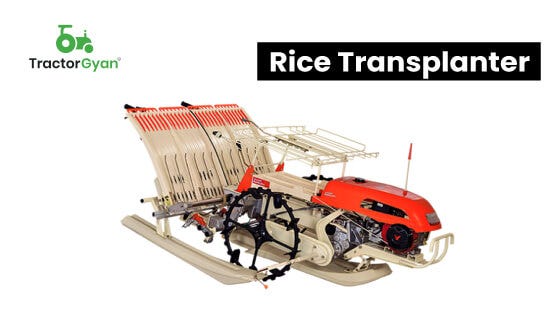Tractor Rice Planter in India
In India, rice is a staple food and plays a crucial role in our agriculture. In the past, transplanting rice was a laborious task as farmers had to manually plant young rice seedlings. However, thanks to modern agricultural technology, rice farming has become more streamlined. One innovation that has greatly contributed to this is the tractor rice planter.

So, what exactly is a tractor rice planter?
It’s a specialized machine that simplifies the process of rice transplantation. It comes with a hopper to hold the seedlings, a planting mechanism, and wheels for attaching it to a tractor. By pulling the machine with a tractor, farmers can cover larger areas and achieve higher efficiency in rice cultivation.
How Does It Work?
The tractor rice planter streamlines the process of rice transplantation. Here’s how it works:
- Seedling Loading: Young rice seedlings are loaded into the planter’s hopper.
- Planting Mechanism: As the tractor moves forward, the planting mechanism places the seedlings into the soil at predetermined intervals and depths.
- Even Spacing: The planter ensures that the seedlings are planted with consistent spacing, which is crucial for optimal rice growth.
- Efficiency: The machine significantly reduces the time and labor required for rice transplantation, making the process faster and more cost-effective.
Benefits of Using a Tractor Rice Planter
- Time and Labor Savings: The planter automates the labor-intensive task of rice transplantation, saving time and reducing the need for manual labor.
- Uniform Planting: It ensures uniform spacing and depth of planting, resulting in better crop uniformity and improved yields.
- Increased Productivity: With its efficiency, larger areas can be covered in less time, increasing overall productivity.
The tractor rice planter has revolutionized rice farming in India, making it more efficient, cost-effective, and productive for farmers. It’s a testament to how modern agricultural technology is transforming traditional farming practices, ultimately benefiting both farmers and consumers.
